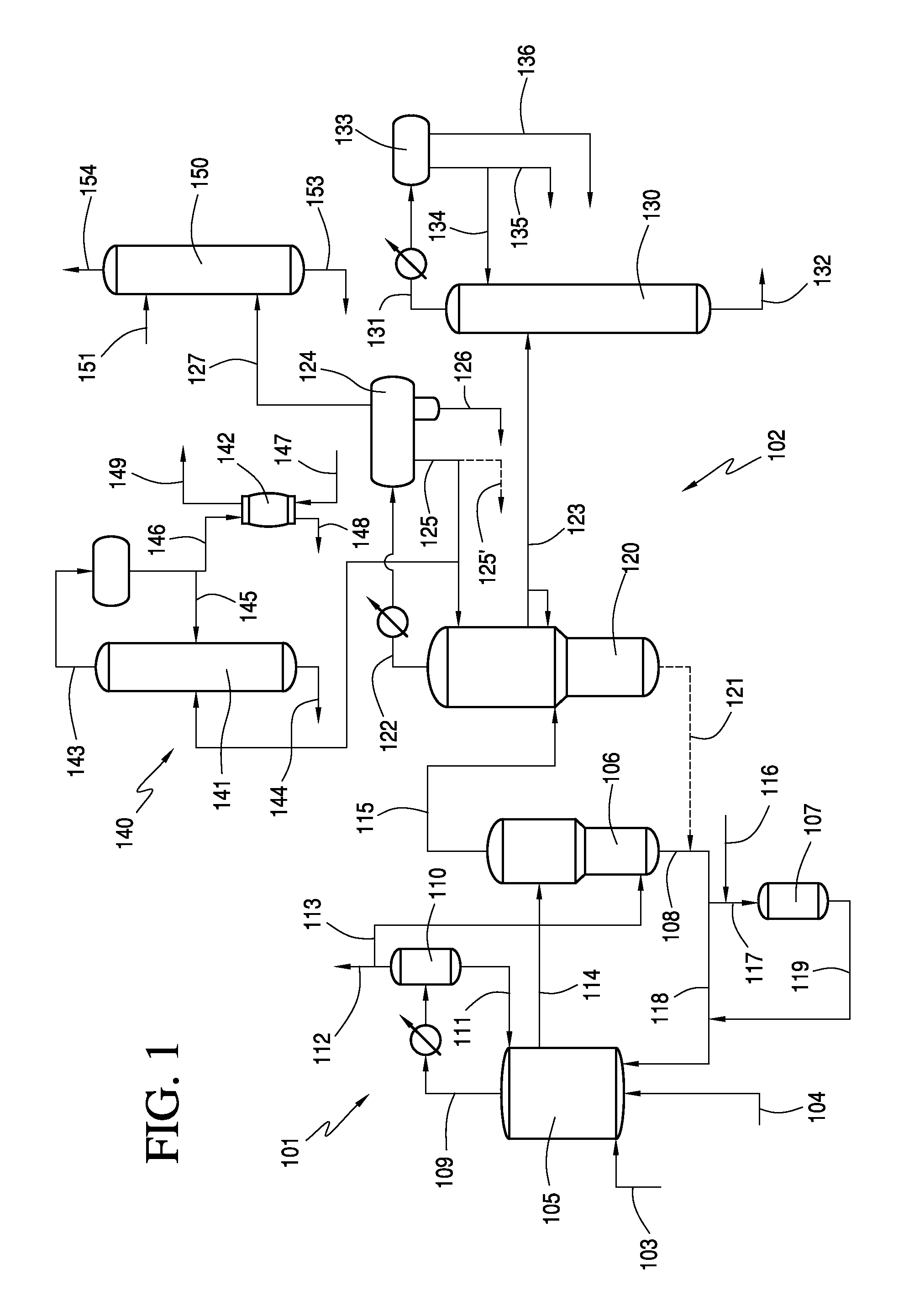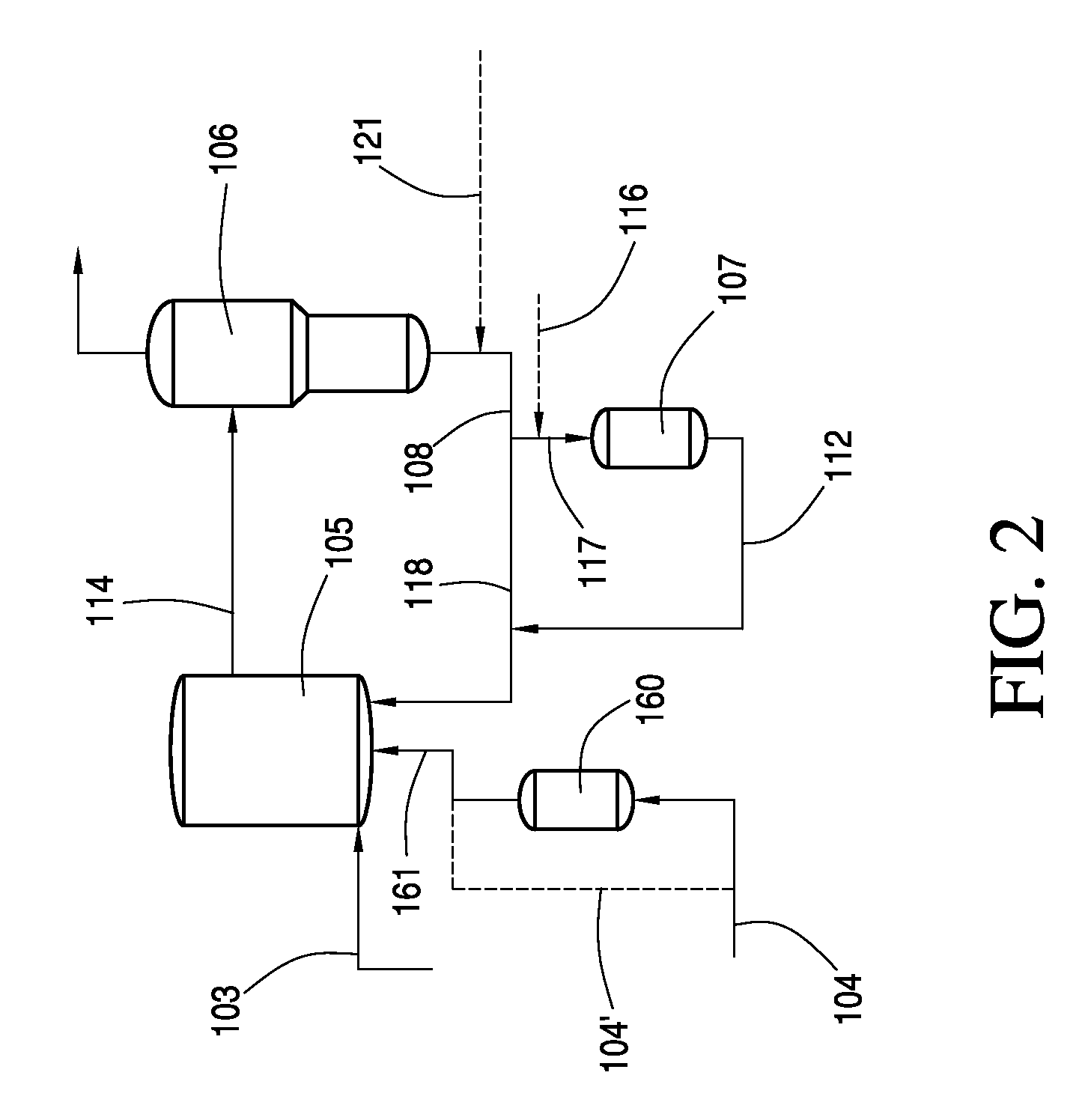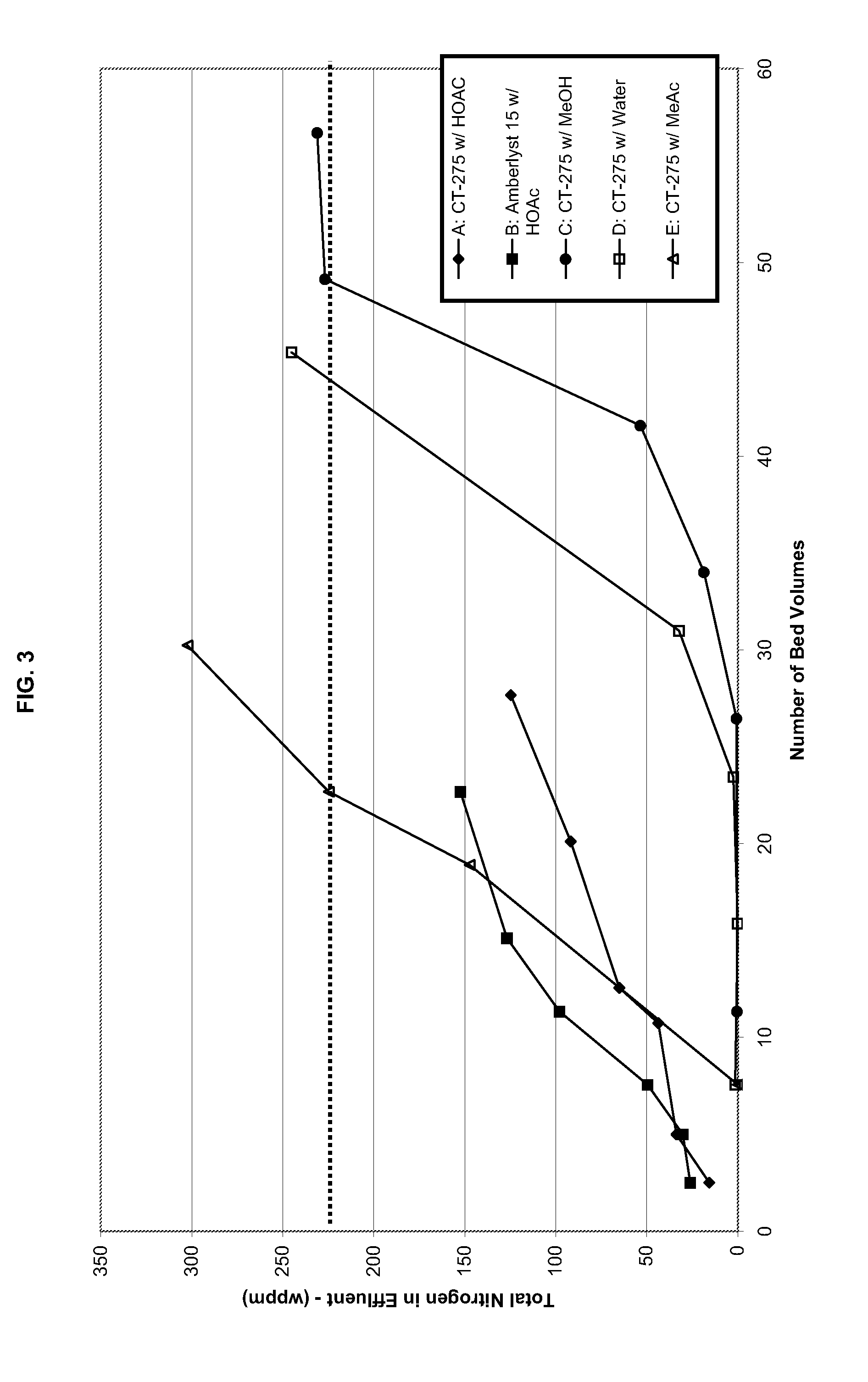Removal of amine compounds from carbonylation process stream containing corrosion metal contaminants
a technology of carbonylation process and amine compounds, which is applied in the preparation of carboxylic compounds from carbon monoxide reactions, carboxylic compound preparations, organic chemistry, etc., can solve the problems of corrosion metal contaminants, corrosion metal contaminants, and impurities to build up in the carbonylation reactor
- Summary
- Abstract
- Description
- Claims
- Application Information
AI Technical Summary
Benefits of technology
Problems solved by technology
Method used
Image
Examples
examples
[0073]Resin capacity is measured by making a “flow through” measurement. In these experiments, a glass column (2 cm×50 cm) was charged with 50 mL of sulfonic acid resin (Dow Amberlyst™ 15 or Purolite™ CT-275). The resin was supported using glass wool in the bottom of the column. The resin was loaded in the water wet, hydrogen form and was backwashed with 10 bed volumes of distilled water to remove fines and classify the resin bed prior to use.
[0074]Several runs were then performed to evaluate the capacity of the resin for removal of amines in the contaminated resin bed feed. The feed was composed of methanol carbonylation reactor content solution which was diluted into various bulk liquids, such as water, acetic acid, methanol, methyl acetate in a 1:10 weight ratio. The reactor solution contains rhodium, acetic acid, methyl iodide, methyl acetate, water, and the nitrogen containing impurities to be removed by the resin.
[0075]The diluted methanol carbonylation reactor solution was pa...
PUM
| Property | Measurement | Unit |
|---|---|---|
| wt. % | aaaaa | aaaaa |
| temperature | aaaaa | aaaaa |
| partial pressure | aaaaa | aaaaa |
Abstract
Description
Claims
Application Information
 Login to View More
Login to View More - R&D
- Intellectual Property
- Life Sciences
- Materials
- Tech Scout
- Unparalleled Data Quality
- Higher Quality Content
- 60% Fewer Hallucinations
Browse by: Latest US Patents, China's latest patents, Technical Efficacy Thesaurus, Application Domain, Technology Topic, Popular Technical Reports.
© 2025 PatSnap. All rights reserved.Legal|Privacy policy|Modern Slavery Act Transparency Statement|Sitemap|About US| Contact US: help@patsnap.com



